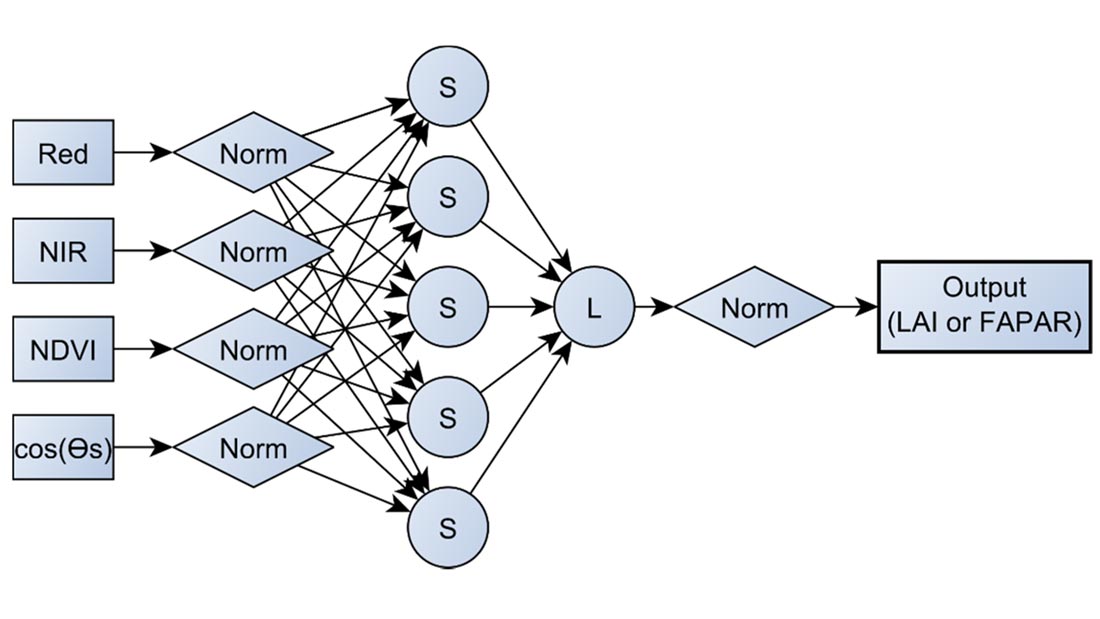
Conceptual representation of the ANN, including normalization (“Norm”) steps. Notice that the number of neurons correspond to the actual number of neurons. S and L stand for “sigmoid” and “linear” neurons, respectively. Inputs are red and near-infrared wavelengths of the AVHRR Surface Reflectance (SR) CDR from NOAA’s NCEI, the NCEI Normalized Difference Vegetation Index (NDVI) CDR, also derived from the AVHRR surface reflectance data, and the cosine of the solar zenith angle.
CICS-NC’s Jessica Matthews contributed to a paper in Remote Sensing that describes the development of an important new global vegetation data set. This new NOAA climate data record (CDR) includes data on both leaf area index (LAI) and the fraction of absorbed photosynthetically active radiation (FAPAR, an indicator of the presence and productivity of live vegetation). Both are recognized as Essential Climate Variables by the Global Climate Observing System, and the data will help scientists observe and understand the role of vegetation in global climate change and variability.
The CDR, known as AVH15C1 LAI/FAPAR, is derived by applying an artificial neural network algorithm to surface reflectance data from Advanced Very High Resolution Radiometer (AVHRR) data provided by seven NOAA polar-orbiting satellites.
The algorithm was validated using both in situ data and the Moderate Resolution Imaging Spectroradiometer (MODIS) LAI/FAPAR product. It provides data from 1982 through the present (near-real time) at 0.05° (~5 km) resolution.
More information on the data set is available at: https://www.ncdc.noaa.gov/cdr/terrestrial/leaf-area-index-and-fapar
Claverie, M., J. L. Matthews, E. F. Vermote, and C. O. Justice, 2016: A 30+ year AVHRR LAI and FAPAR Climate Data Record: Algorithm description and validation. Remote Sensing, 8, 263. http://dx.doi.org/10.3390/rs8030263
